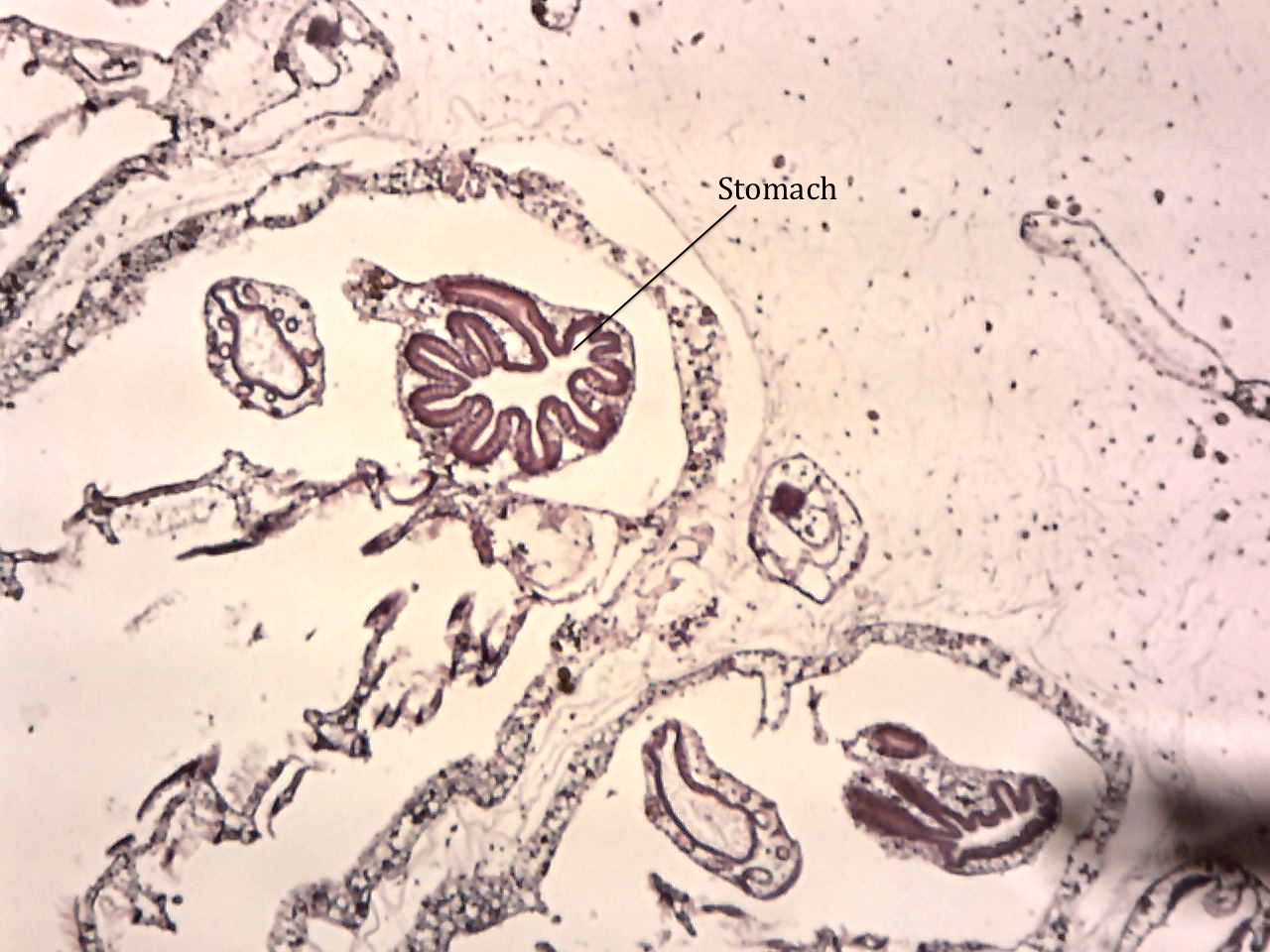Feeding Mechanisms
B. tuberatus are efficient suspension/filter feeding organisms, just like any other ascidian. They filter a range of 24 to 540 ml/hour/gm wet weight of the organism (Kott 1989). Ascidians mainly feed on small organisms, such as phytoplankton or bacteria. This is done by the continuous flow of water through the branchial baskets of the organism. Water flows from the incurrent aperture of each individual zooid, through the individual and out of the excurrent aperture, which leads to the common cloacal aperture of the colony. This allows for excurent water flow to becontrolled by the colony as a whole instead of by the individual (Kott 1989). Tentacles are present at the entrance of the B. tuberatus incurrent aperture to ensure that large particles do not enter and clog up the zooids (Kott 1985, Petersen 2007).
The branchial basket of B. tuberatus is lined with lateral cilia that beats synchronously to create water currents in the direction desired, as seen in figure 1 below. The branchial basket and stigmatal openings affect the pumping rate, and is different for each ascidian species (Petersen 2007). However, this aspect of the B. tuberatus have never been studied and no information could be found.
Figure 1. Image shows the lateral cilia within stigmata of ascidian Ciona intestinalis. Even though the picture does not depict B. tuberatus, it can be assumed that the ciliation would be similar. Adapted from Fiala-Medioni (1978).
Other than housing the cilia that causes water flow, the branchial basket also serves as a support structure for the thin mucus film that is continuously produced over it. This mucus net is produced at the endostyle and helps to trap food (MacGinitie 1939). The cilia then rolls the trapped food along, down the branchial basket and into the oesophagus, and eventually the stomach (figure 2) and gut. The mucus net is a elongated rectangular mesh that have openings that are 0.1-1.1 μm2 wide (Petersen 2007). This is probably animportant ancestral characteristic as there is little variation between species (Flood & Fiala-Médioni 1981). The net has a high porosity, and allows for up to 98% of particles to pass through.
 Figure 2. Image showing the stomach of B. tuberatus with its 10 distinct longitudinal folds extending its whole length.
Figure 2. Image showing the stomach of B. tuberatus with its 10 distinct longitudinal folds extending its whole length.
The actual shape of the gut is also another factor used in ascidian species identification. For B. tuberatus, they have a L-shaped gut.
|